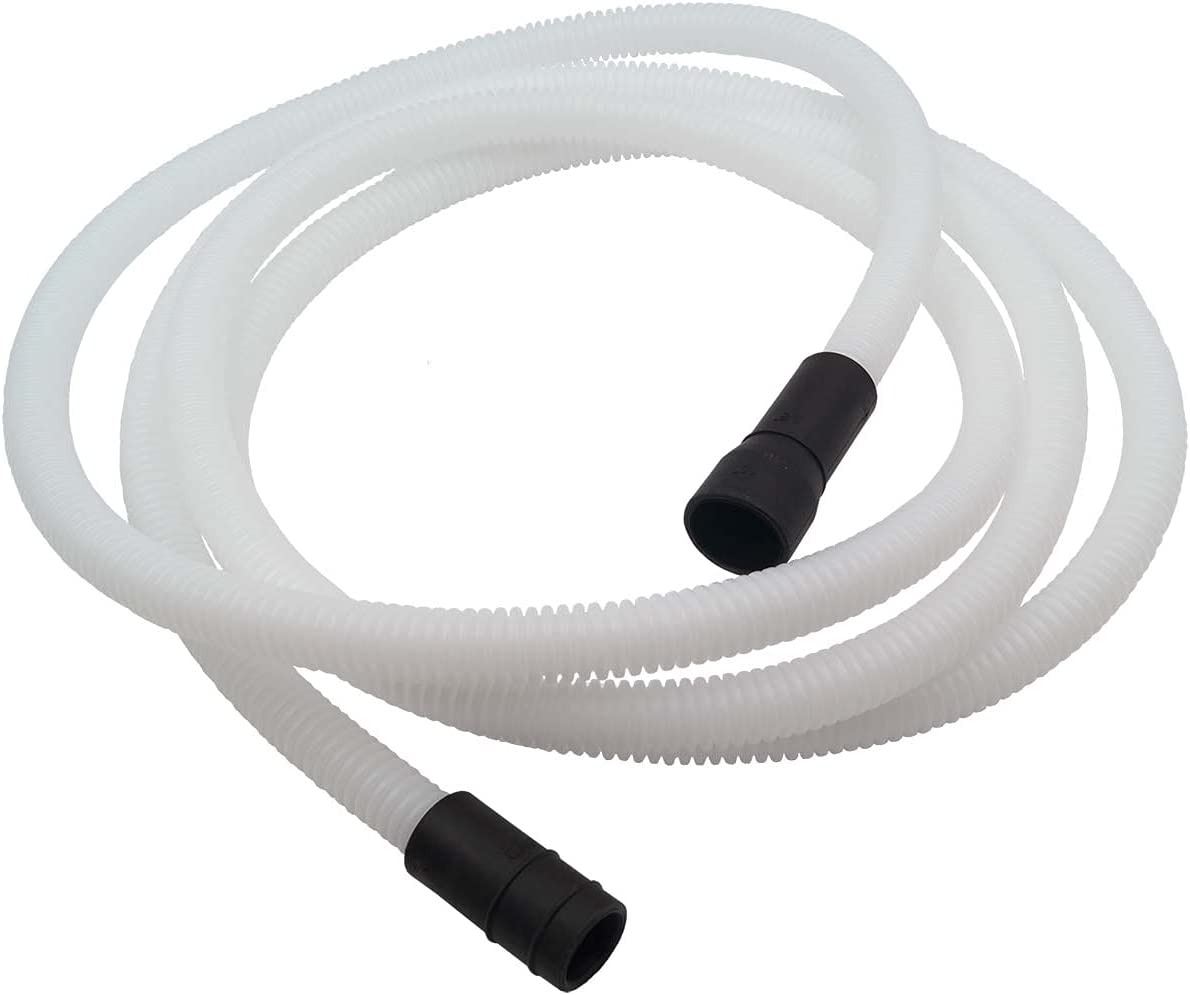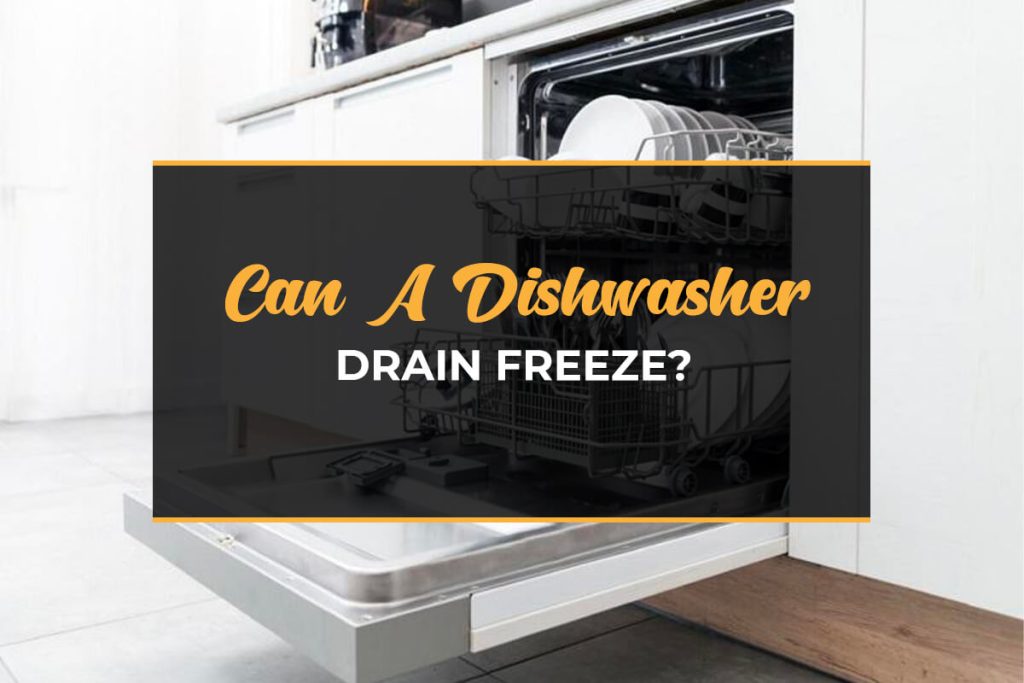Many people who have their own homes consider having a dishwasher a luxury item. And similar to the ownership of any other object, having one brings some liabilities. The good news is taking care of a dishwasher doesn’t require much work. By carefully following the instructions that come with it, you can ensure you will get the most value out of the money you invest in your dishwasher.
However, the handbook for your dishwasher doesn’t include everything there is to know about it. Manuals for dishwashers typically don’t offer instructions or an overview on how to safeguard your appliance from harsh weather conditions such as winter or whether or not it even needs additional protection. Which brings us to the crux of the matter: can the dishwasher drain freeze?
Yes! It’s possible for the dishwasher drain to freeze. Any water that’s left in the dishwasher, its pipes, or its tubes has the potential to freeze, which might result in burst pipes, a damaged dishwasher, or a huge mess. While keeping your home heated can aid in winterizing your dishwasher, pipes that are situated on exterior walls in uninsulated areas are still susceptible to freezing.
Since we now know the drain line coming from your dishwasher might freeze, let’s talk about how we can winterize the drain line so it won’t freeze in the first place, as well as other frequently asked questions.
Winterizing Dishwashers
- Preparing the Dishwasher
To get the dishwasher ready for the winter, you need to empty it first. Also, take out the basket holding the silverware and any wire racks that can be removed.

If there are any leftover scraps of food in the dishwasher, wipe them out with a sponge or start a sanitizing cycle with the machine empty. Dry the interior of the dishwasher using a dishcloth after there are no more pieces of food debris left, giving particular attention to the bottom of the machine as well as the container for the detergent and rinse aid.
- Water Supply
You’ll need to switch off the water supply to your house when the interior of your dishwasher has been thoroughly dried. To stop the flow of water into your home, you’ll need to locate the main water valve and turn it as far to the right as you can. It’s important to drain any water that may still be present in the pipes, especially those leading to the dishwasher inlet. Run the garbage disposal, since the garbage disposal and dishwasher often share plumbing.
- Antifreeze
After the water has been completely removed from your pipes, fill the basin of the dishwasher with between a third and a half of a gallon’s worth of pink non-toxic antifreeze.

Start a quick cycle of cleaning in the dishwasher once you’ve turned it on. This will enable the antifreeze component to cycle in every part of your dishwasher. When the dishwashing machine reaches the rinse stage of the cycle, turn off the dishwasher. The antifreeze will remain inside the dishwasher throughout the winter. Place a lock on the dishwasher or put a sign on the dishwasher indicating there’s antifreeze in the system to warn anyone who may attempt to use it.
- After Winter
You’ll need to drain the antifreeze out of the dishwasher after the winter season. Turn the water supply on by turning the knob on the water main to the left. To remove the antifreeze from the tubes and piping of the dishwasher, you need to run it through at least three cycles. Despite the fact that it’s not harmful, you should avoid ingesting any antifreeze or eating food that has been served on dishes that have been covered with the material.
How to Prepare Your Dishwasher for Cold Storage During the Winter
Putting all of your appliances, including your dishwasher, into cold storage is another precaution you can take to prevent the drain line of your dishwasher from freezing. This is especially true for rental or vacation homes that will sit unoccupied during the cold weather months.
When your belongings are placed in cold storage, it indicates that the storage facility does not provide heat to the portion of the building where they will be stored. It’s possible for the cold weather of winter to get into these storage areas and cause damage to any home appliances that have not been adequately prepped for storage in a cold climate.
Below is a guide that will help you get your dishwasher ready for storage in a building that doesn’t have heat during the winter months.
- Disconnect Hoses and Electric
You’ll need to slide the washer out from below the kitchen counter in order to have access to the valve that shuts off the water supply and the switch that turns off the power. Turn off the water supply by closing the valve that’s placed along the wall behind the dishwasher.

This is normally where the hose that links the dishwasher to the household’s water supply is located. Disconnect the water hose from the main water supply in the house as well as the rear of the dishwasher. Be careful to lay down some towels or rags on the ground to collect any water that spills out.
Remove the plug that connects the dishwasher to the electrical socket. Using duct or masking tape, roll up the electrical cord and attach it to the dishwasher’s rear.
- Drain Dishwasher
You’ll need to empty the dishwasher of any remaining water that has been collected there. Attach a hose to the drain valve, and then place the other end of the hose into a shallow catch basin. Turn on the drain valve and allow the water to flow into the catch basin as it drains. Fill the sink with water after emptying the catch basin.
It’s possible that you won’t be able to get all of the water out of the pipes until you blow air into the line. Begin by removing the water valve located at the water supply inlet but only do this if necessary. Get a compact air compressor, and then insert the nozzle end of the air hose into the aperture in the valve. Start the air compressor, and then direct the airflow into the line.
- Drain Pump
After opening the door, reach inside the machine and take off the plastic that’s covering the pump located at the bottom of the dishwasher. In most cases, only a handful of screws are required to secure the pump in place.

Make use of a sponge or some dry rags in order to soak up the water that’s at the bottom of the dishwasher as well as in and around the pump. Change out the pump cover and the screws. To ensure the water hoses are kept in a secure location, retrieve them and place them in the dishwasher. Use masking tape to close and secure the dishwasher door.
Can You Manually Drain a Dishwasher?
The process of emptying a dishwasher may be challenging at times, but it’s not impossible. The easiest method to accomplish it is by following these steps in order:
- Turn off the power to the dishwasher and pour out any water that may be inside.
- Using a screwdriver, take out the screws that are located at the bottom of the dishwasher.
- Move the dishwasher so that it’s facing away from you. This will make it easier for you to reach the drainage hose.
- Using pliers, loosen the clamps attached to the dishwasher’s drainage hose, and then remove the clamps from the dishwasher.
- After emptying it completely, replace the drainage hose.
Can a Dishwasher Drain Hose Run Under the Floor?
Yes. However, the dishwasher hose needs to be supported, and you must not let it sag or collapse under its own weight. It’s important the area under a dishwasher has a clean and smooth floor since this will allow the drain hose to glide over it without getting caught on any sharp edges or protrusions, such as nails or staples.
Alternatively, if you find that your tiles are glued down, you will most likely be required to tear them apart in order to correctly route the dishwashing hose beneath.
Before attaching another metal or plastic adapter, modern dishwashers generally include an incorporated plastic adapter that’s inserted into the sink opening. The adapter is used to hold the hose in place so make sure that it’s tightly attached before using the dishwasher.

If the drain line for the dishwasher doesn’t come with an built-in adapter, you’ll need to purchase an adaptor separately. A basic kind of adaptor will do as long as it can wrap the hose and the clamps on works fine.
Make sure there’s sufficient slack in the drain pipe before mounting the dishwasher so that it can move freely without kinking.
If the length of the hose is insufficient, you’ll need to lengthen it by using a piece of drainage tubing as a connector. Make sure to use a tube that’s approved for dishwasher use.

Test the dishwasher once it has been installed and a drain hose has been linked to it by emptying a pail of water into the sink while the dishwasher is running.
If everything is operating as it should, the water will be able to flow from the dishwasher going down the drain. If everything has been fitted correctly and is operating as it should, your dishwasher should be able to drain without any issues at all.
Be sure to periodically check the hose for any kinks or wear and tear that could cause it to fail.
Can a Dishwasher Drain in the Basement?
No, a dishwasher drain that’s installed in the basement will not function properly. In order to properly function, the dishwasher has to be plumbed into the kitchen’s drainage system.
In most cases, an air gap or a drain waste overflow (DWO) device is utilized in this configuration. In the absence of this measure, wastewater might possibly flow backward into the machine during times of excessive usage or when waste materials clog the microscopic filters found in most standpipe sinks.
In order for an air gap to be effective, the drain line that transports water away from the dishwasher must lead up to the height of the countertop edge and then some, preferably between 10 and 12 inches farther. The air gap boasts an installment next to the sink. Some DWOs are conventional standpipes modified with an elbow that is set at an angle of ninety degrees at the top. They often connect to pre-existing drain pipes that are not continuously pressurized.
Others have check valves or one-of-a-kind pumps integrated into the base of the device. The vast majority of contemporary DWOs are designed to be installed at a level that’s much below the level of the countertop and do not require any sort of maintenance unless they have some kind of mechanical failure.
Why is there Standing Water in the Bottom of My Dishwasher?
If you find your dishwasher has water in the bottom, the issue is either with the dishwasher itself or it could be caused by clogged trash disposal or sink drain line.

If there’s water pooling at the bottom of the dishwasher, it means the drain is not working properly. This is typically the result of a blocked filter or drain hose, or of drain pump impellers that have become stuck. A kinked or improperly placed drain hose, a blocked trash disposal, or sink drain pipe are among other potential causes of this issue.

